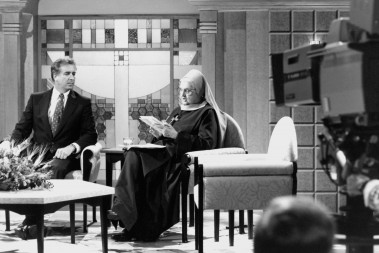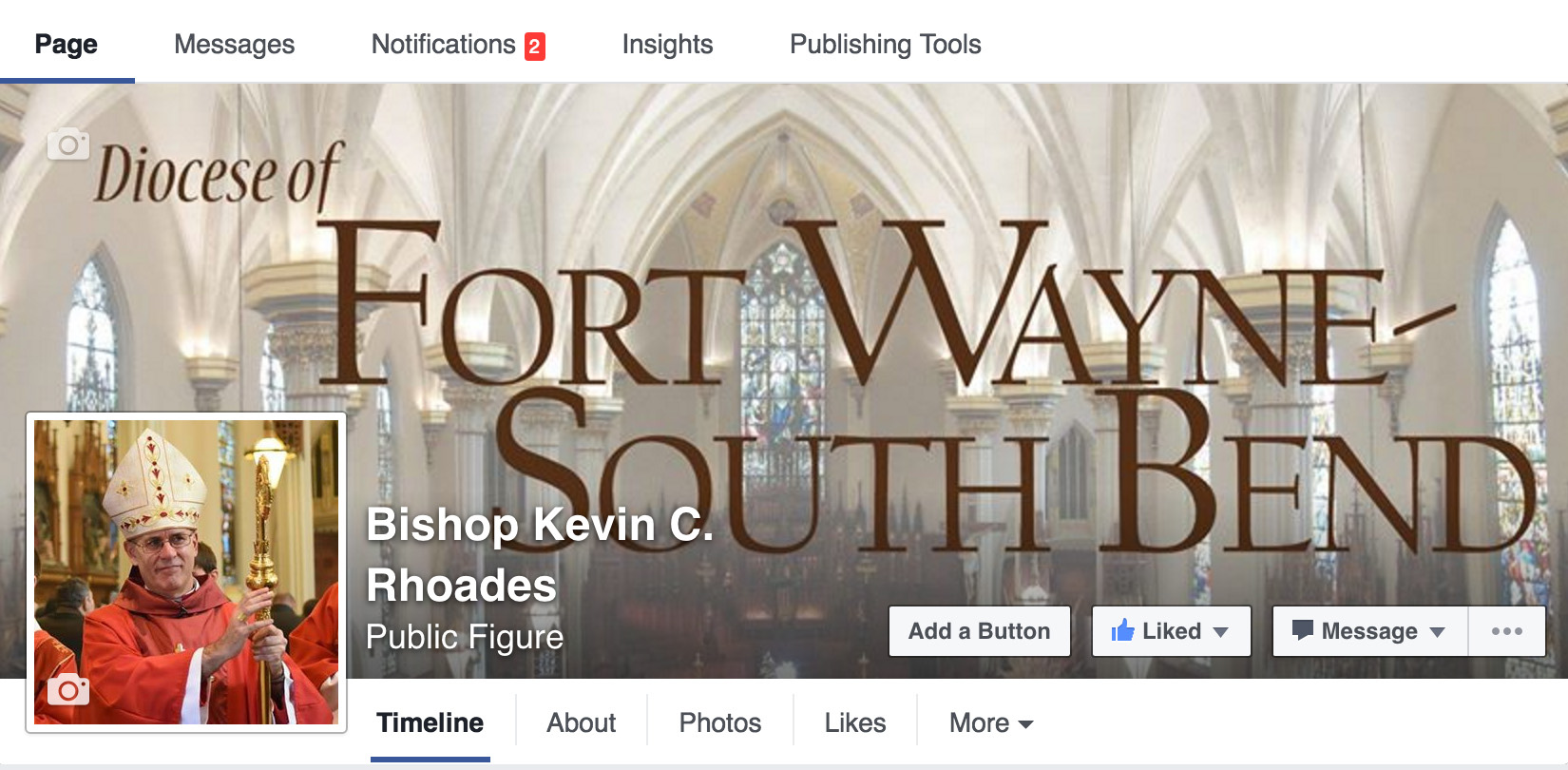May 18, 2016 // Local
Communicating to Connect, Evangelizing to Encounter
Why the Catholic Church needs to take communications seriously
By Stephanie A. Patka
“The Church needs to be present in the world of communications in order to dialogue with people today and help them encounter Christ.” — Pope Francis
When one considers all things ‘Catholic’ and then considers all things ‘communications,’ the two words together don’t necessarily seem compatible. Even the name, ‘Catholic Communications” exists as a paradox in and of itself. The mission of the Catholic Church has remained the same since the time that the apostles were sent out on the feast of Pentecost to go and evangelize the world. And yet, “modern communications,” as we understand it changes and evolves with each passing day.
As a secular society, we have experienced how life has shifted to adjust in this Information Age: a truly transformational time where, through new media and digitalization, an entire universe of knowledge is accessible through a screen that fits in your pocket. The Information Age is shaping generations much like the Industrial Revolution did with manufacturing and changing how humans contributed to the economy. These days, however, we are not just faced with just the innovation of a new assembly line or product — the Information Age brings with it a complete shift in the fundamental way that people communicate and interact with other persons around them; in their families, in their jobs, in their communities, as well as how they interact with the global community of people that are now all connected through the Internet.
As humankind has adjusted to the rapidly shifting and changing Information Age, new forms of technology are being developed and released into the general public in mass proportions, thereby propelling society into what many entrepreneurs and technology experts are referring to as the Exponential Age — a time when we still have all the components of the Information Age, but we have them at an ever increasing rate. Additionally, this Age is marked with the greater use of communication technology and global innovation for the purpose of marketing and profitability.
Even though communication is so advanced, the novelty has worn off and we now struggle to make sense of it all. The prospect of communicating a 2,000 year old Catholic message in such a noisy secular (and in some places anti-Catholic) world seems daunting. This becomes even more intimidating when one considers that the target audience is distracted and veiled behind their screens. However, the good news is that the Catholic Church has recognized the opportunity to evangelize on what Pope Benedict has called the “digital continent.”
Movement was made to address the impact of communications when Pope Paul VI instituted the inaugural World Communications Day in 1967. It was an initiative, proposed by the Second Vatican Ecumenical Council, to draw attention to the fact that modern communication (which during that time included only press, movies, radio and television) had the ability to shape public thought and opinion for the better or for the worse. Pope Paul VI encouraged and affirmed the work of Christian communications professionals asking them to “bear witness in the cause of the ‘World,’ that in all its temporal expressions must be a faithful echo of the eternal, uncreated Word, the Word of the Father, the Light of intellects, the Truth that so ennobles us.”
He went on to say that it was equally as important that these efforts not simply be executed by professionals, but supported by parents (the first educators of their children), by teachers, by young people and by public authorities. The pontiff also cautioned that those who would consume the information were to take care to choose their sources of information wisely, holding these communications resources to a higher standard that complies with a sense of morality and the highest values of life.
Throughout her history, the Church has heard inspiring, compelling and strong Catholic voices emerge with the communication technology of the time. In 1922 in Poland, St. Maximillian Kolbe, under duress of tuberculosis, began to publish a monthly review called the Knight of the Immaculate. Inspiring vocations to the priesthood, the publication continued its growth, and by 1935, Kolbe and his fellow priests were producing a daily Catholic newspaper, The Little Daily, which had a circulation of 137,000 daily and 225,000 on Sundays.
Beginning in 1925, Archbishop Fulton Sheen quickly became famous around the world for his preaching and talks on radio and television including shows called, The Catholic Hour and Life is Worth Living. He was also a prolific writer, and various programs of his are still re-aired on EWTN and Relevant Radio. Due to the fact that he was one of the first religious persons to give sermons and religious talks on television, Sheen is considered one of the first tele-evangelists.
After a chance visit in 1978 to a Baptist-run television studio, a contemplative nun named Mother Angelica saw the evangelistic opportunities that modern television could provide. On January 27, 1981, EWTN received an FCC license and become the first Catholic satellite television station in the United States. Today, EWTN has become the largest religious media network in the world, transmitting programming 24 hours a day to more than 230 million homes in 144 countries and territories on more than 4,800 cable systems, wireless cable, low power TV and individual satellite users.
For these three, using the secular communication tools at their disposal was the way that they were able to evangelize. Not only did they change and shape Catholic communications as we know it today, but more importantly, they saved souls in the process. God was able to use their evangelistic work on a national and international stage, and we see this continue in examples like the Twitter updates of Pope Francis today. As faithful Catholics, we too, are called to evangelize. For us, it can be as simple as utilizing the modern resources at hand (or literally in our hands) to share the love of Jesus with those around us and ultimately to help provide opportunities for other people to have an encounter with Jesus. We have no excuse not to participate because we live in the Information/Exponential Age with technology and communication devices so readily available.
On the other hand, this technology brings on an anonymity. This may cause us to shrink back. We can be afraid to be vulnerable by exposing our beliefs. Perhaps we are intimated by technology we don’t understand or are scared of what will happen when we do use our secular technology for a religious or moral purpose.
So, for those who need some inspiration on what to share, there are resources all around you. Powerful Catholic communicators of our modern time include men and women who lean into the beauty of the Holy Spirit and help to tell the Catholic story. To start, watch some Youtube videos of Bishop Robert Baron, follow Matthew Kelly’s Dynamic Catholic team on Facebook, listen to Teresa Tomeo interviews on iTunes and immerse yourself into the prolific writings and public talks of Scott Hahn. Personally, I recommend starting on a local level by following the brand new Facebook page for our very own Bishop Kevin C. Rhoades.
While the Exponential Age of information and technology continues to race forward, unfortunately, the speed of communications and technology within the Catholic Church remain at a steady lingering pace. There is much work to be done, and it’s not about taking a selfie with a priest or checking into a parish location. This is about the task of reaching and saving souls. And for those souls who remain hidden behind the screen of a phone or computer, technology integration and innovation is the next frontier for evangelization within the Catholic Church. God-willing, we continue to move forward.
As the director of the office of Communications for the Diocese of Fort Wayne-South Bend, I humbly ask you to pray for our office as we manage diocesan communications for the sake of evangelizing and leading people to Christ. It’s a great time to be Catholic and an even better time to talk about it.
The best news. Delivered to your inbox.
Subscribe to our mailing list today.










